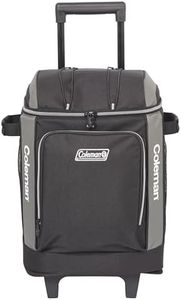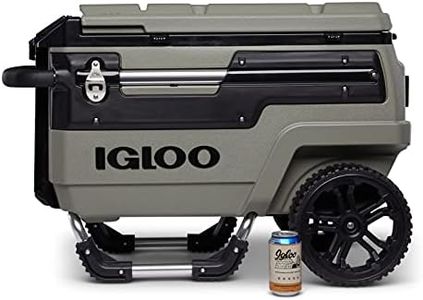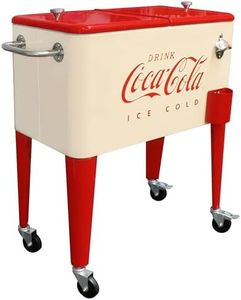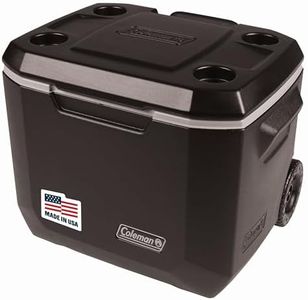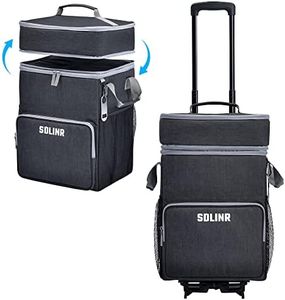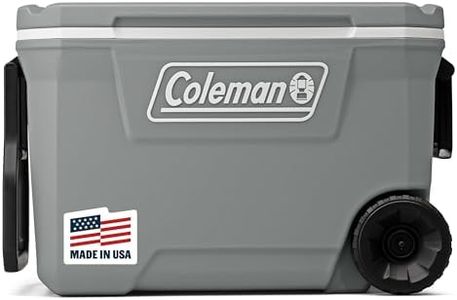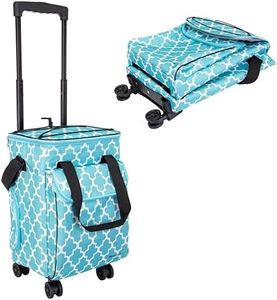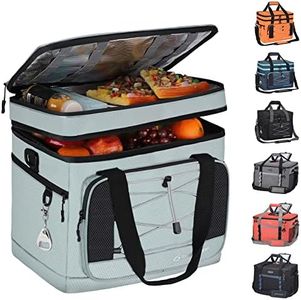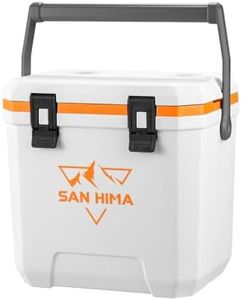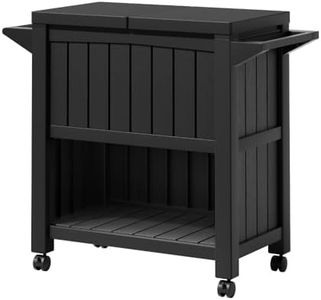We Use CookiesWe use cookies to enhance the security, performance,
functionality and for analytical and promotional activities. By continuing to browse this site you
are agreeing to our privacy policy
10 Best Rolling Coolers
From leading brands and best sellers available on the web.Buying Guide for the Best Rolling Coolers
Choosing a rolling cooler can make a big difference for outdoor events, camping, picnics, or beach days. It’s not just about keeping your food and drinks cold; it’s also about convenience, ease of transport, and durability. When selecting a rolling cooler, think first about how you plan to use it, how much you usually carry, and where you’ll be transporting it (paved paths vs. sand or grass). Focusing on the most important features will help you find a cooler that fits your routine and makes your trips much easier.Capacity (Quarts or Liters)Capacity tells you how much you can fit inside the cooler and is typically measured in quarts or liters. Smaller coolers (20-40 quarts) are suitable for solo or couple trips, offering easily enough space for snacks and a few drinks. Medium ones (40-60 quarts) suit small groups or family outings, letting you pack enough food and beverages for a day. Large coolers (60+ quarts) are ideal for big gatherings or longer trips, but can get too heavy to handle alone. Think about how many people you want to serve and the types of food and drink you commonly bring to decide on the right size for your needs.
Insulation Performance (Ice Retention)Insulation performance means how long your cooler will keep things cold, usually tested by how many days it can keep ice from melting. Entry-level models may keep things cold for a day or so, while premium coolers can maintain cold temperatures for up to five days or more. If you’re only gone for a few hours or a single day, standard insulation is sufficient, but multi-day camping or travel requires better ice retention. Match the cooler's cooling time to the typical length of your trips.
Wheel Type and SizeWheels make rolling coolers easier to transport, but not all wheels are the same. Small, hard wheels work fine for smooth surfaces like pavement but can struggle on sand, gravel, or grass. Larger, wider, or rubberized wheels handle uneven terrain much better but can make the cooler bulkier. If most of your outings are at parks or campsites with rough ground, look for bigger and tougher wheels. For picnics on paved spots, smaller wheels are generally enough.
Handle DesignThe handle is what you’ll use to pull your cooler, so its comfort and durability matter. Telescoping handles that lock in place make rolling easier and adjust to your height, while fixed handles are often more basic. Some coolers offer side handles for two-person lifts, which help when it’s fully loaded. Choosing a comfortable, sturdy handle is important if you expect heavy loads or long walks from the car to your picnic spot.
Durability/Build QualityDurability refers to the construction quality and materials used in the cooler's body, wheels, hinges, and handles. Lightweight plastic coolers are simple to move but may crack or wear out faster, especially with rough use. Heavy-duty coolers with reinforced lids, metal hardware, and stronger plastics withstand more abuse and last longer but are heavier. Consider how often and how roughly you’ll use the cooler—occasional picnic use demands less toughness than weekly camping trips or sports events.
DrainageA drainage plug lets you empty melted ice water without having to lift and tip the entire cooler. Some coolers have built-in drainage spouts to make cleaning and emptying easier, while others require manual tipping. If you often deal with ice melting during longer trips, or just want a hassle-free clean-up, having a drain can be very useful.
Additional FeaturesExtra features like built-in cup holders, cutting boards, bottle openers, or dry storage trays can make your experience more convenient. While not critical, these features can add comfort and organization, especially if you like to keep things tidy or need specific functions during your trips. Think about your usual routines and what small extras could offer added value.

